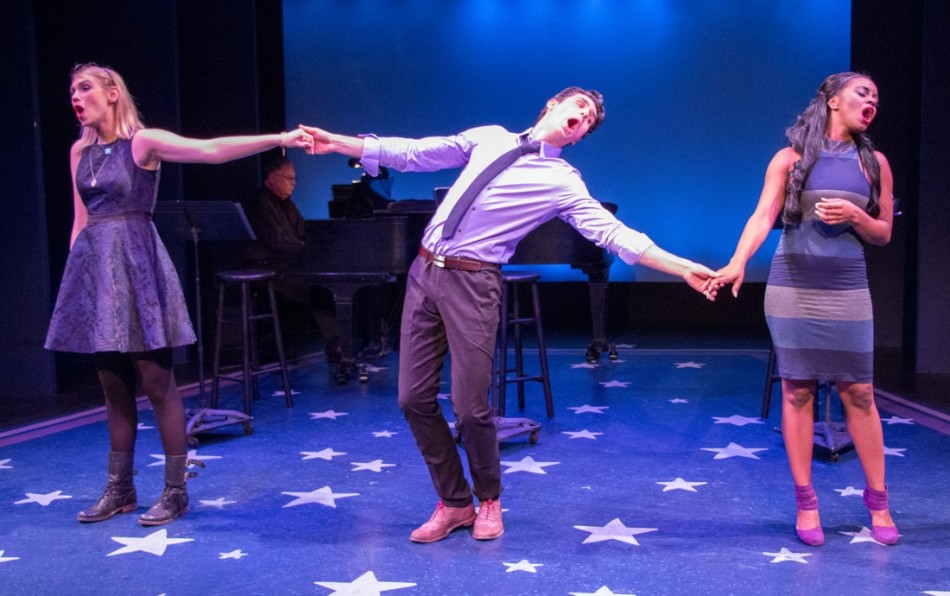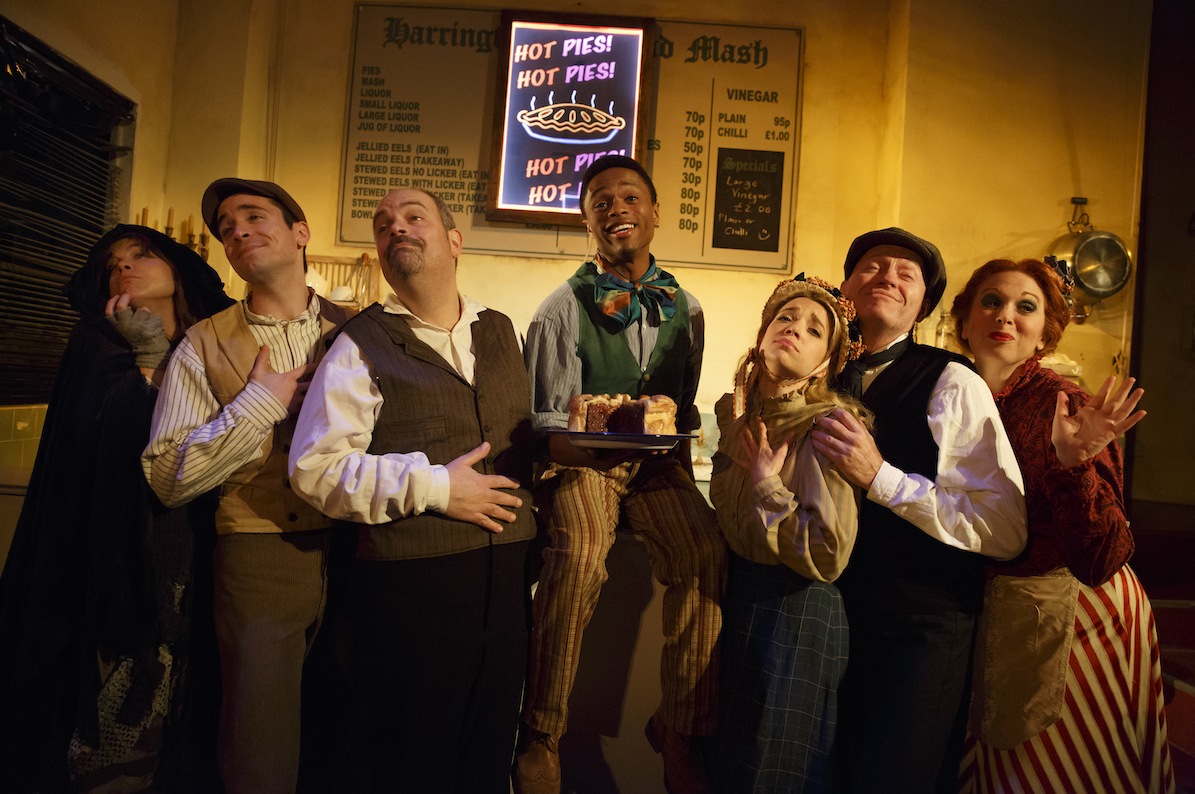by Stuart Miller
If you focus just on the individual aspects of Katherine Rundell’s Life According to Saki, there’s plenty to admire: imaginative directing, spirited acting, a mesmerizing Bunraku puppet, an anachronistic dig at our new president and moments of wit and pathos. But no matter how hard you look, there’s no forest there despite all the trees; Life with Saki is an evening of moments, unable to sustain itself.
The show, directed by Jessica Lazar, won Carol Tambor Best of Edinburgh Award at the Fringe Festival there and is now at Fourth Street Theater and bringing to life a disparate collection of short stories by Hector Hugh Munro, who was known as Saki before he was killed in World War I. The problem is not the stories’ lack of cohesion and the misguided atttempt at linking them thematically through a framework that places Saki in the trenches with his troops from where he introduces each story. There are plenty of sketch comedy performances or one-act play festivals that don’t cohere as a whole but are nonetheless memorable. Life According to Saki simply overestimates both the framing device and the power these short stories have when translated to the stage.
Little is known about Munro’s life as his sister Ethel destroyed most of his papers after he died, perhaps because he was a gay man during the era of Oscar Wilde’s homosexuality trials. His penchant for satirizing high society may have derived from there and from the strict family members who raised him after his mother was trampled by a cow on a country lane, an incident tonally mishandled in the play but which may explain his taste for the macabre. He found success as a short story writer but then volunteered for active duty in World War I despite being 43; he passed up opportunities to leave the battlefield before a German sniper killed him in 1916.
Saki acts as a kind of host of the evening, with David Paisley displaying a wide range of emotions, capturing the David Brent-like delusional self-regard but also an urgent lust for life, capacity for mischief and an awareness of mankind’s foibles.
“The Unrest-Cure,” the first and one of the more entertaining stories acted out with vigor (but sometimes without subtlety) by the rest of the cast illuminates the problems, small and large, with the evening. The tale involves an elaborate practical joke played on a stuffy, boring prim and proper man and his sister; the joker shows up claiming to be the secretary to the Bishop (and maybe a prince himself) who needs to stay with them on an emergency basis, thoroughly disrupting their dreary routine.
In Saki’s story, the sister takes some measure of control after they receive the initial telegram announcing the visit and then he writes, “Her brother said nothing, but his eyes thanked her for being brave.” However, on stage, the brother verbally thanks his sister, with a melodramatic air that undercuts the actual emotions of the story.
Worse still, is the idea introduced later in the scene that the Bishop intends to “massacre” everyone in the community with a mustache. It’s an absurd idea, maybe one that would have worked in the hands of Monty Python; yet Saki’s practical joke was actually much darker– in the original story the Bishop plans to “massacre every Jew in the neighborhood.” The menacing manipulations and ineffectual protests are terrifyingly prescient of the Holocaust (not that persecution of the Jews was a novel idea in Europe) and it is easy to understand why Katherine Rundell felt it was too dark in tone for the play but without it the story is robbed of its power and, to a large extent, its purpose.
“Esme,” about an inadvertent encounter with a hyena during a fox hunt, is similarly mildly entertaining yet saps the original story of its sharper edges. While there are puppets used as animals throughout, “Sredni Vashtar” has the most memorable member of the cast. The haunting Bunraku puppet is of a sickly boy who loathes his strict cousin and guardian, Mrs. De Ropp; the boy invents a religion with his ferret as the all-powerful god and prays for the destruction of Mrs. De Ropp. The frenzied chanting to his god during the scene’s climax is enhanced by the eerie and implacable demeanor only a puppet can provide. It is the evening’s most potent moment, enhanced by the Saki-esque irony that it is an inanimate object revealing our most basic human traits.
The stories about life back home in England are meant to contrast with the life in the trenches but that is never fully developed. If, however, the play does inspire audience members to discover the original stories, giving Saki new life, then perhaps that should be considered a triumph.
Fourth Street Theatre (83 East 4th Street, between Bowery & Second Avenue) – limited engagement through Sunday, March 5 – OvationTix on 866-811-4111 or visit tinyurl.com/Life-Saki. Run Time: 1 hr 10 min.
Photos by Monica Simoes

























